
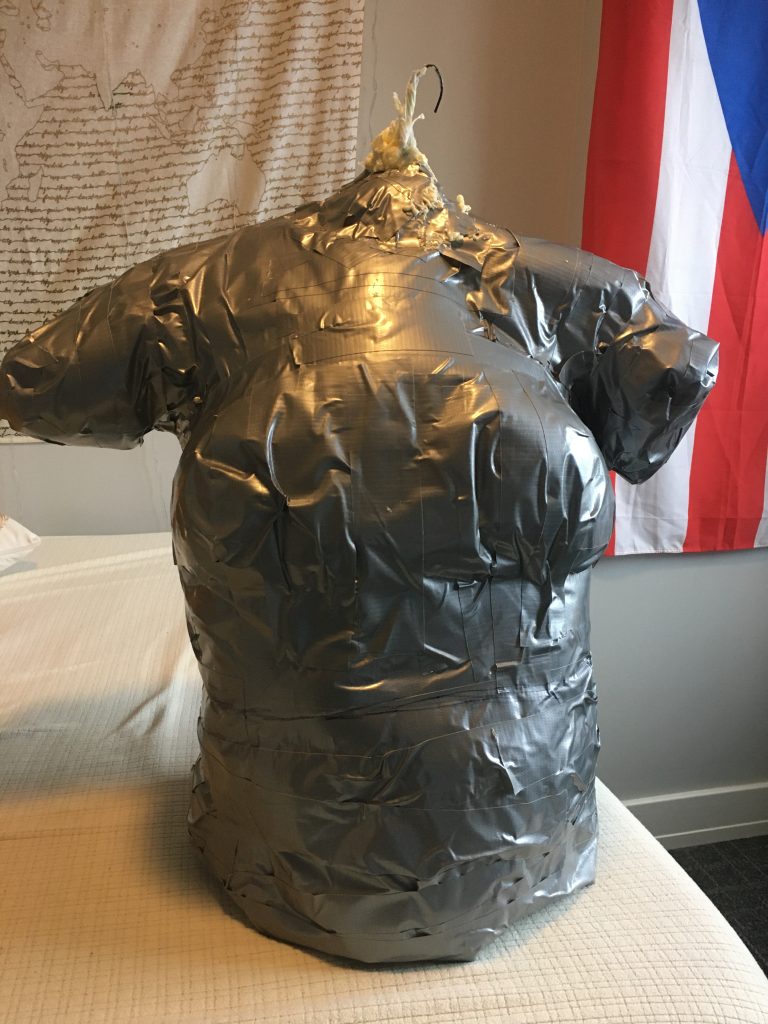




This was fun to make, but took longer than expected! It felt very much like building a sculpture which I enjoyed, but I had some difficulty trying to fill all the spaces inside the body. The body looks fairly accurate so it’s definitely a bit uncanny to look at- not sure why the breasts look a bit overly defined to me though.
Below are images of the dress form. I had a lot of fun making this. I used around 2 rolls of paper towels to fill this up before adding the can of great stuff. I also finished my roll of duct tape. My shoulder area seems a little weird but everything else seems fine.
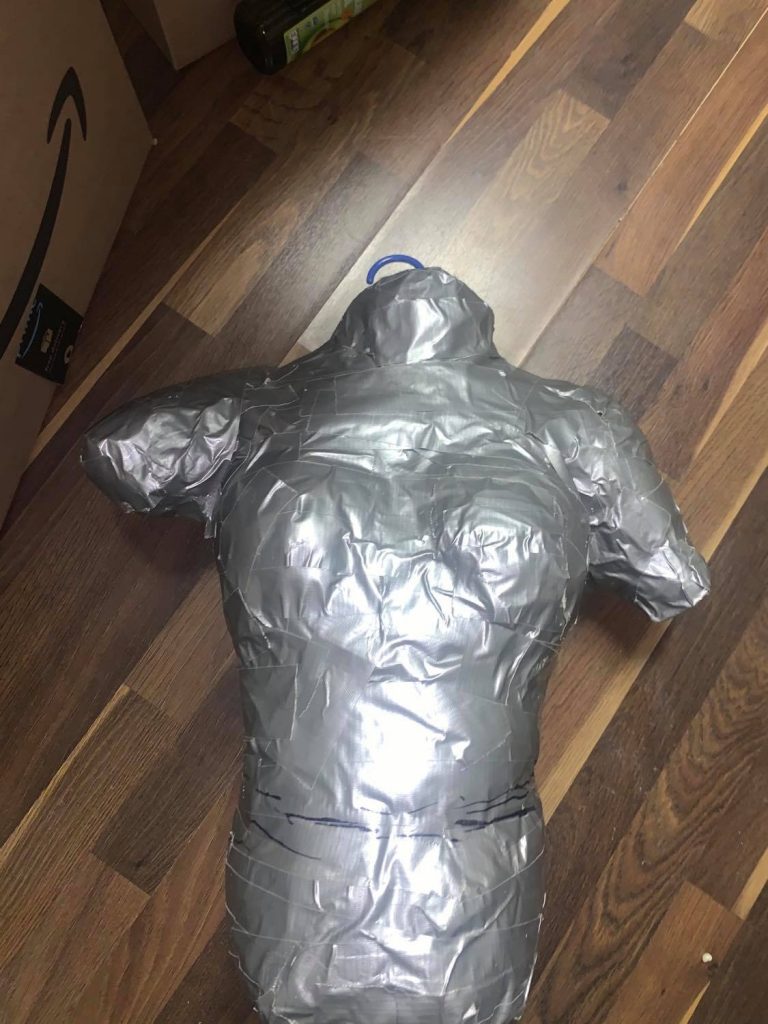
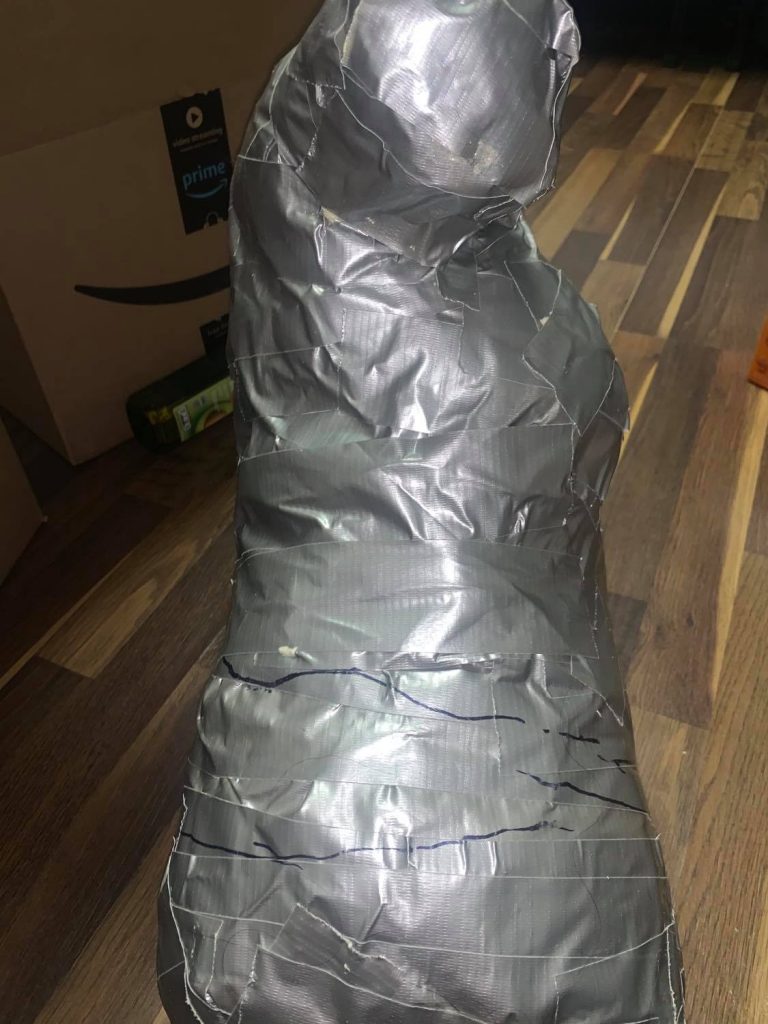

The dress form took me longer than I expected. I think I used too much duck tape in order to ensure that the shell is stiff to hold the shape. Other than that, I’m happy with the overall results. I did run out of an entire can of great stuff which only fills less than half of the shell. I will need to get more soon. The neck and arms are sealed and the bottom base is going to be cardboard after I finish filling the shell with more foam.
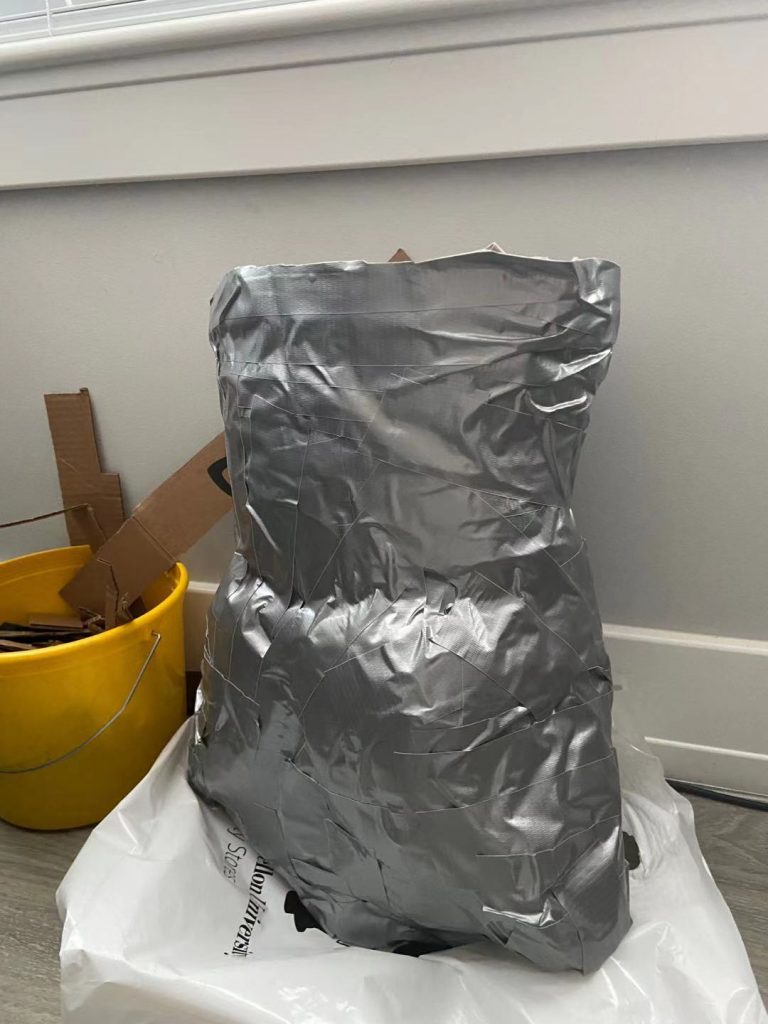

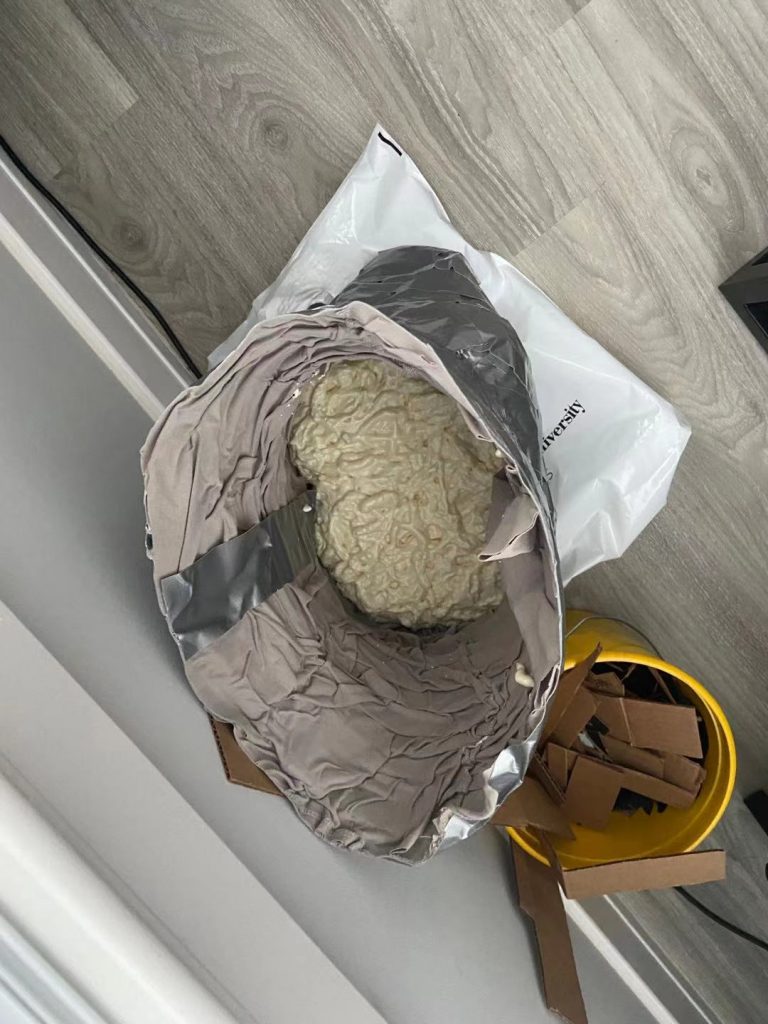
I finished it up with more spray foam and cardboard base. It can stand on a surface.

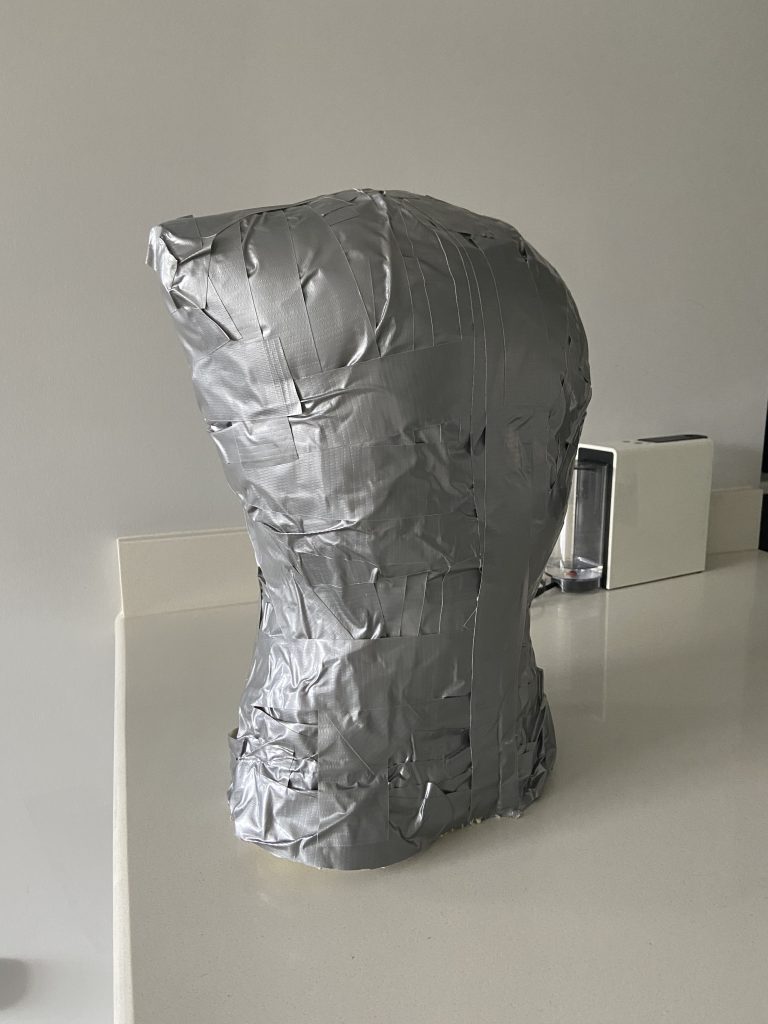
Below is the dress form. I had a lot of trouble with it – it seemed like a black hole that I couldn’t fill, but we reached a point where I’m happy with it. The chest seems a bit off because I was wearing a binder while this was done, and the base is cardboard so its level.
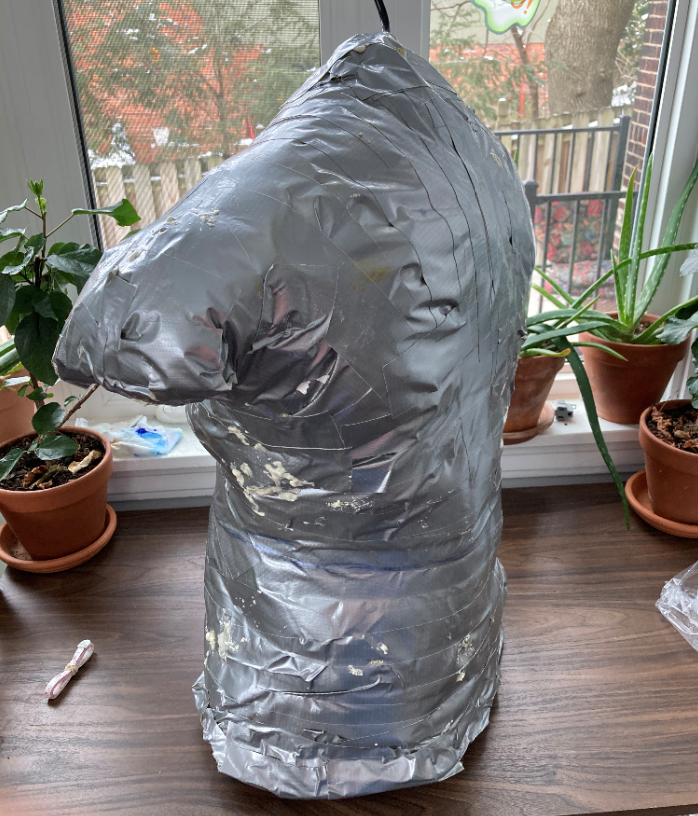

The fabric I chose to do is linen, and this is a linen dress from my closet.
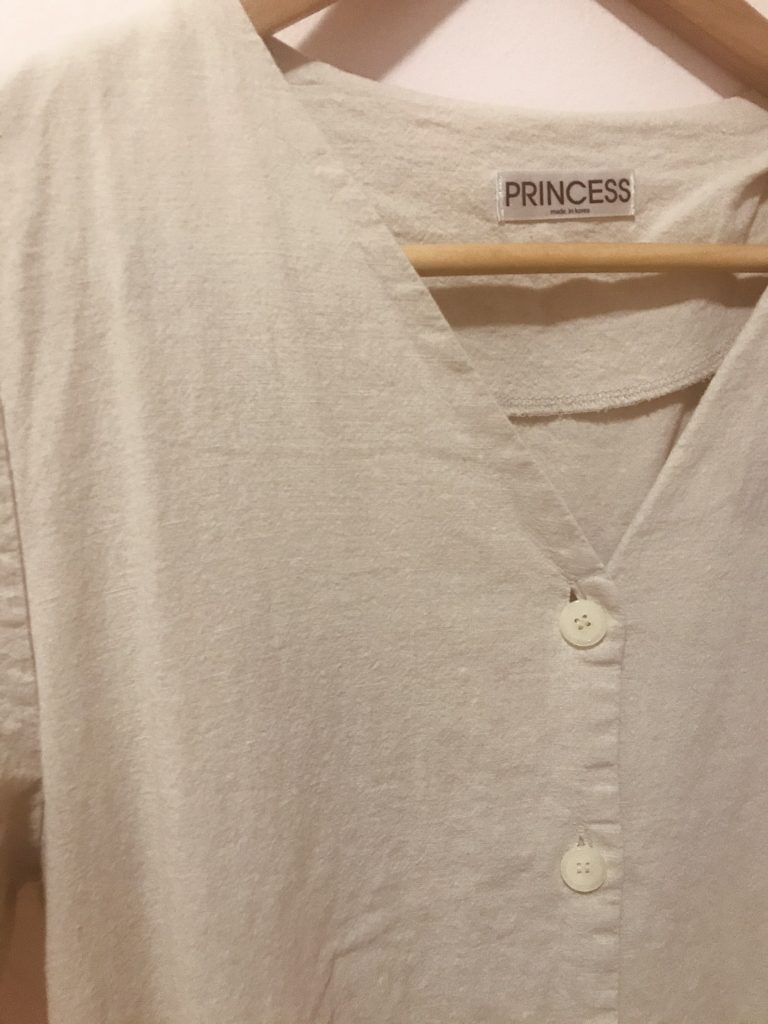
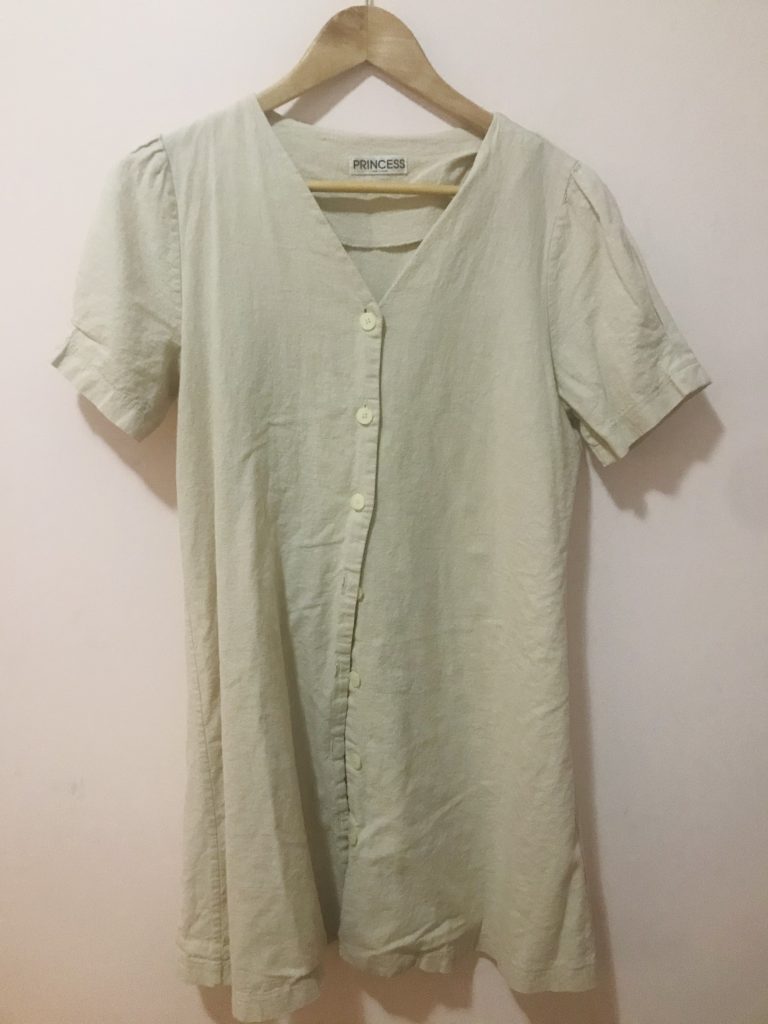
Some other garments that feature the use of linen are:


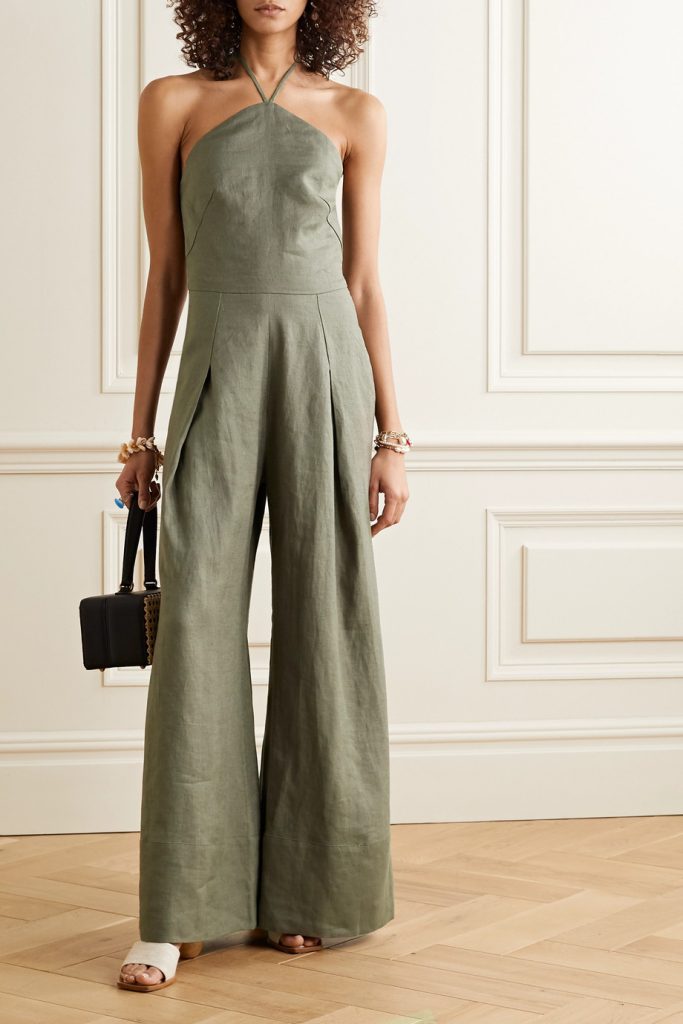
A Cultural History of Dress and Fashion in the Medieval Age by Sarah-Grace Heller takes an in-depth look at linen and other fabrics, discussing the amount of human labor and capital that went into textile production, the societal status associated with what people wore, and the life-cycle of such fabrics.
According to Fabric Saavy, linen comes in four weights: gauge, handkerchief, medium, and heavy. It is a crisp fabric made from fibers of the flax plant and doesn’t drape, but is extremely cool to wear in hot weather. The most common mistake people make with linen is choosing the wrong weight for their project.

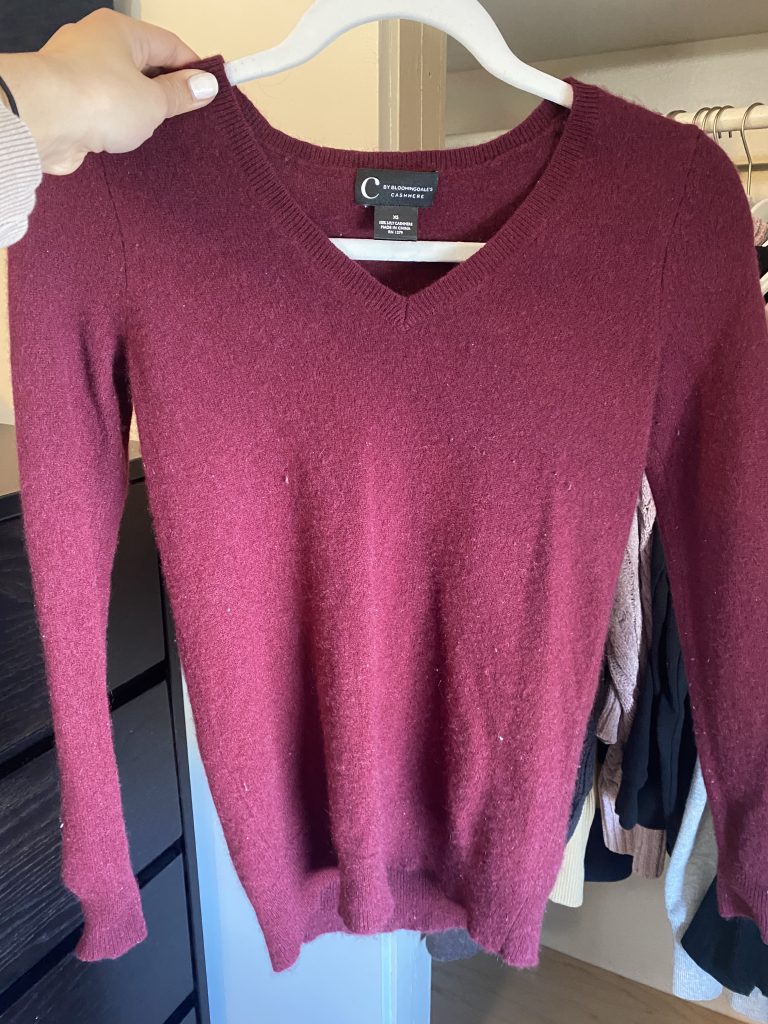
We chose to look into cashmere knit. Above are some photos of a cashmere sweater I have. Other examples of cashmere garments include sweaters, gloves, coats, and pants/leggings.
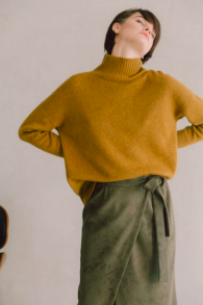
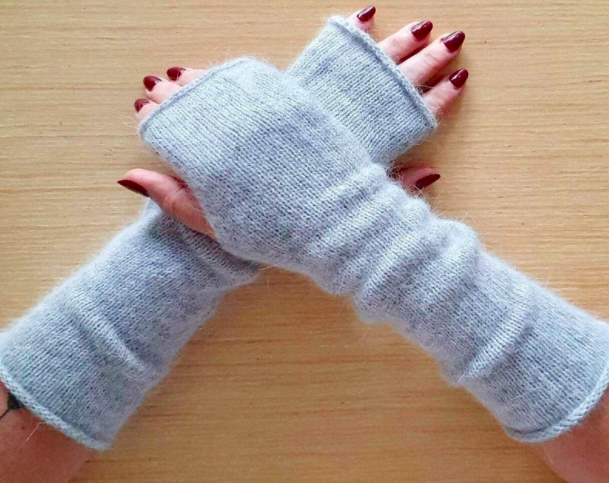


Cashmere sweaters do not need to go to the dry cleaner to get cleaned, as many people think. You can wash them using warm water on a gentle cycle in the washing machine and use the permanent-press cycle on the dryer. It is made from fine hairs of the underbellies of goats raised in extreme climates.
Photos of Garment

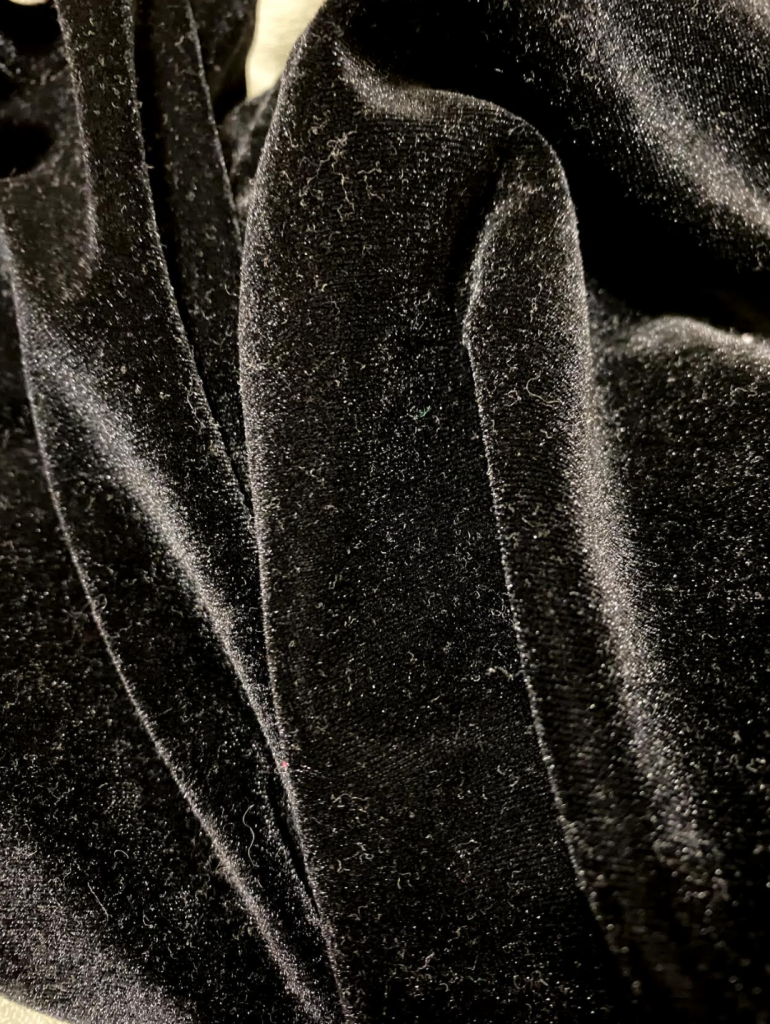
-Mules, Shoes, 15-16th century, Artist Unknown- Made from leather and velvet with embroidery
-Womans Hat, 1950, American artist-Made from straw and velvet
-Cocktail Suit, 1991-92, Gianni Versace -Velvet with gilt buttons
-Velvet dress, 1975-79, England house in business- Velvet
“Radical Decadence, Excess in contemporary feminist textiles and craft” by Julia Skelly. This chapter discusses how British artist Roxanne Hawksley uses items representing decadence, death and mortality in her works. These works often feature items made of velvet as a fabric that is considered to be luxurious and littered throughout royal portraits. Skelly describes how the artist explicitly juxtaposes decadent luxury fabrics like velvet with objects representing death and decay, creating intersections of poilital, visual, and material culture.
Velvet can be used from pants to dresses to even jackets. It can be a difficult fabric to work with, especially when using microfiber velvet as that does not exactly press well and may be difficult to control. When working with velvet, it is important to note that holes do not come out! That means you should pre-test your pattern and even have a sample swatch to see how the fabric reacts.
When sewing, the fabric needs to be relaxed every couple of inches. This means you should lift the foot and both layers or pieces of velvet to be able to sew evenly on it. Lastly, it is suggested to use double sided tape/adhesive to hold the fabric together when sewing, remembering to not sew on the tape but next to it.
Bonus:
Before the introduction of synthetic fibres in the 20th century, velvet was made from silk, which was very expensive and only accessible to those with high levels of wealth. It originate in 750 AD in Bagdad, before it made its way to the Mediterranean and the rest of Europe.
Sophia Huang and Franky Moore
We chose cotton, in this case being used as a knit fabric. Below is Sophia’s garment that is a knit cotton pullover. The left is a zoomed-in photo of the fabric. The right has the full garment.
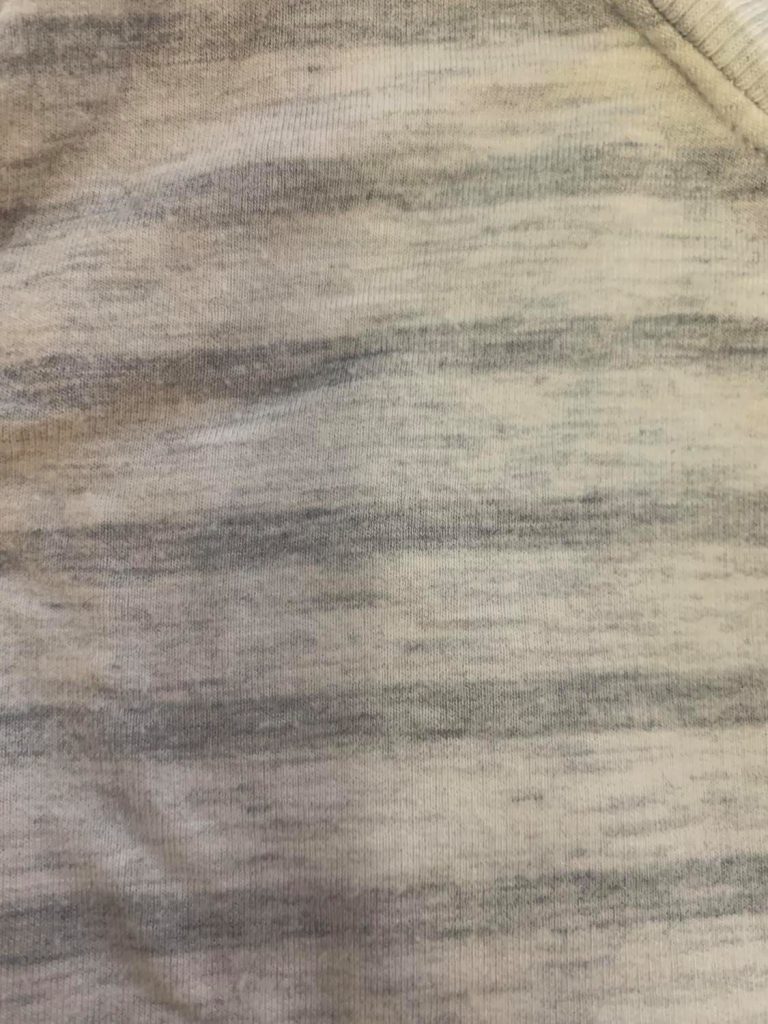
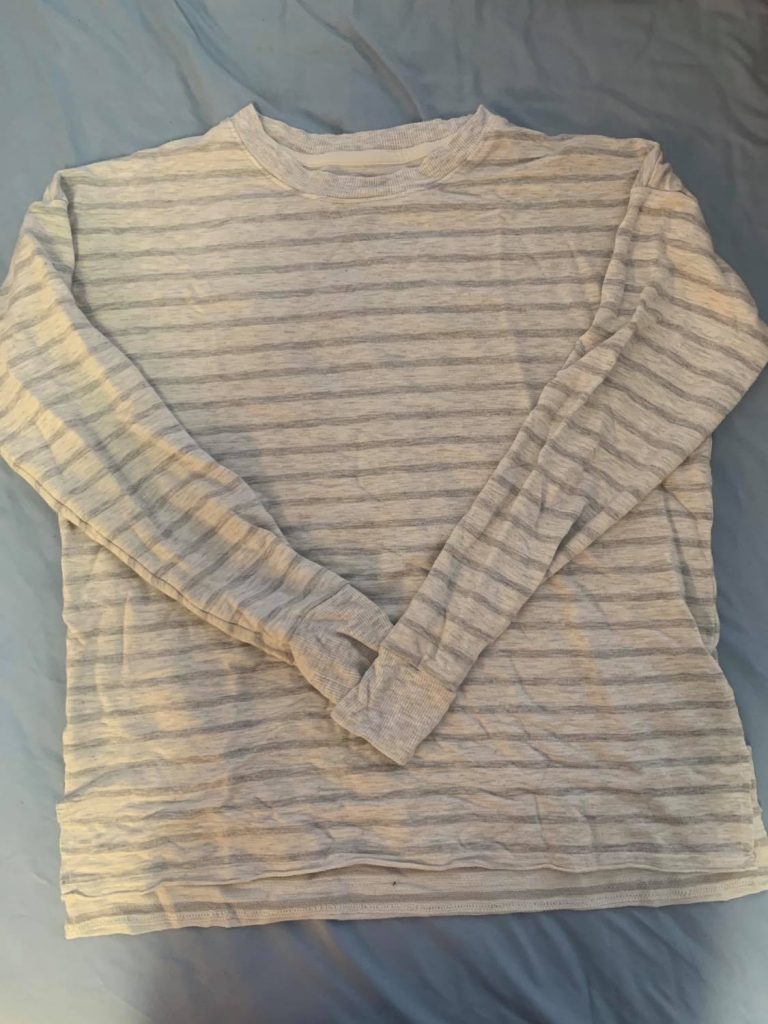
Below are three different uses of cotton. The image on the left is a modern Prada dress with cotton and polyester. The central image is a cotton lacework collar, and the rightmost image is an older dress with cotton.
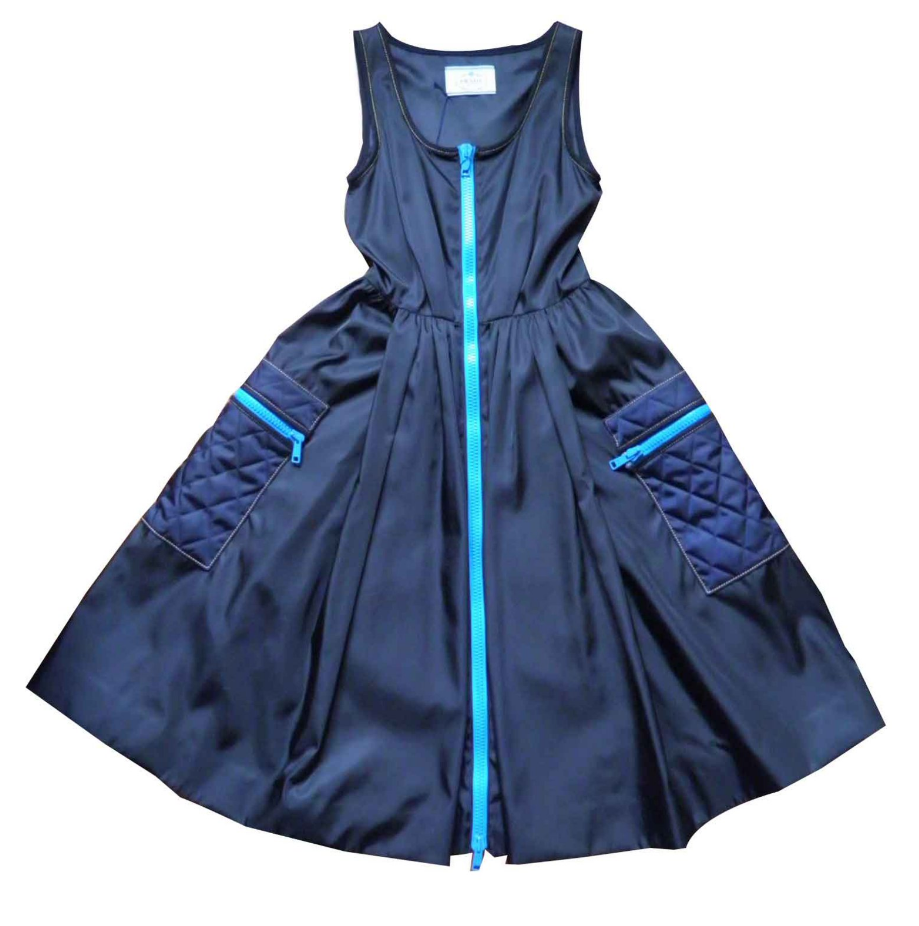

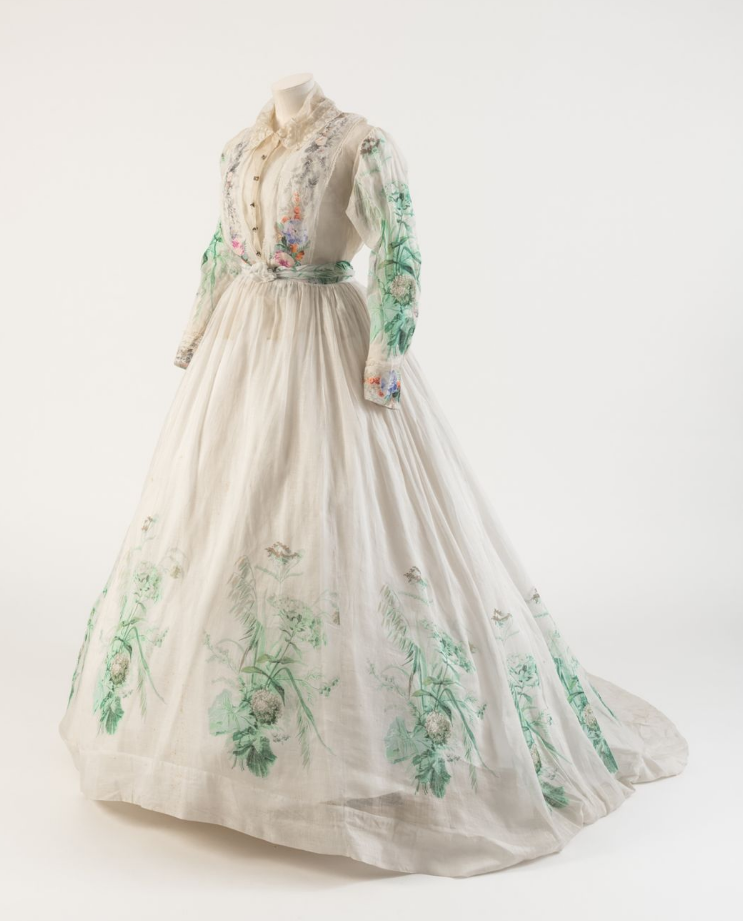
The article we chose was “Dress, Body, and Culture in Brazil” by Rita Andrade and Regina A. Root which looks at the historical context of Brazilian fashion, including cotton and it’s use in Brazil. It’s interesting to see how cotton was used by indigenous people and how it had been used to incentive colonial policy.
Material: Polyester woven
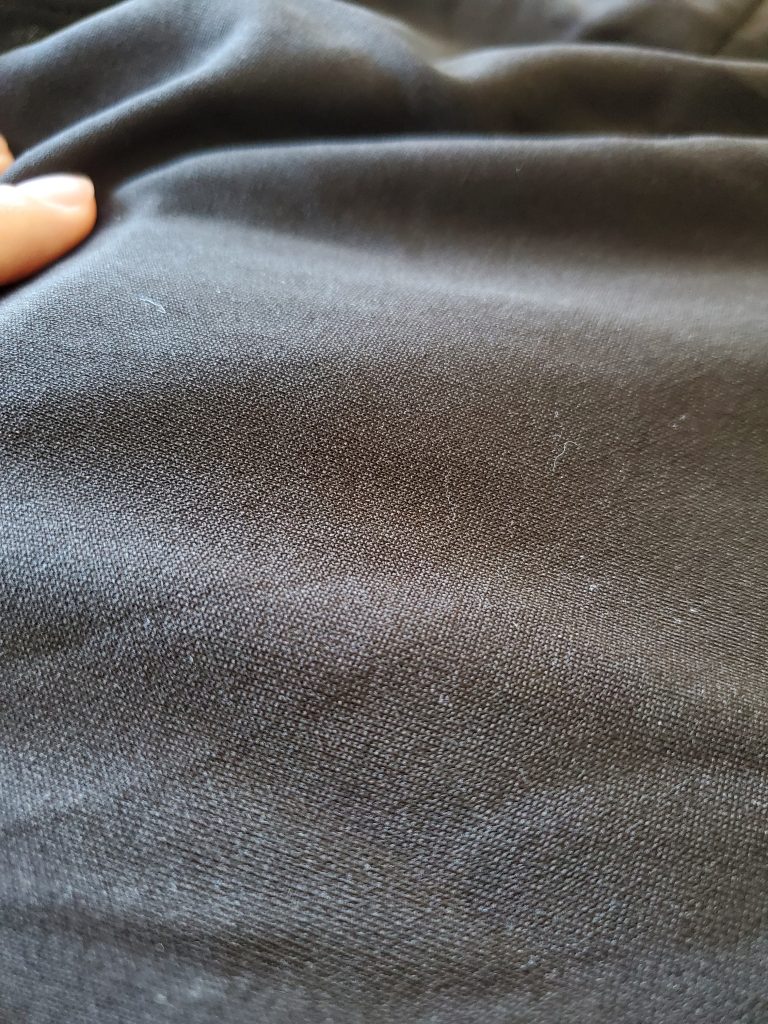

Related Article:
Textile Manufacture In Japan
Part 5 Under Chapter: Japan
by Desiree Koslin
Useful Information:
Polyester should be cut on the crossgrain or bias to prevent the seams from puckering.
Bonus:
Polyester was first invented in 1941, and was discovered in the W. H. Carothers’ laboratory. It was first introduced to the American public in 1951, advertised as a material that can be used in a variety of garments that would not need to be ironed.